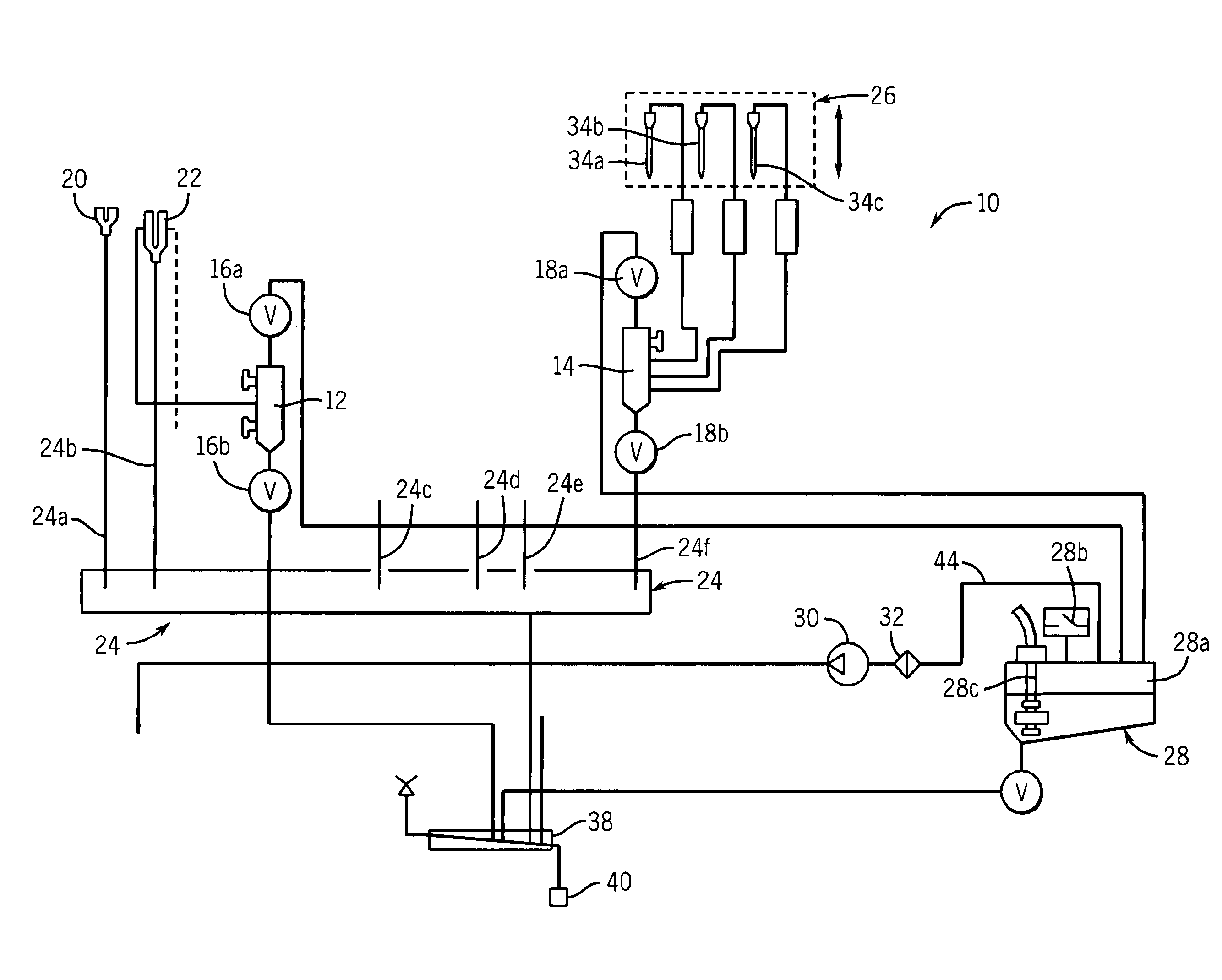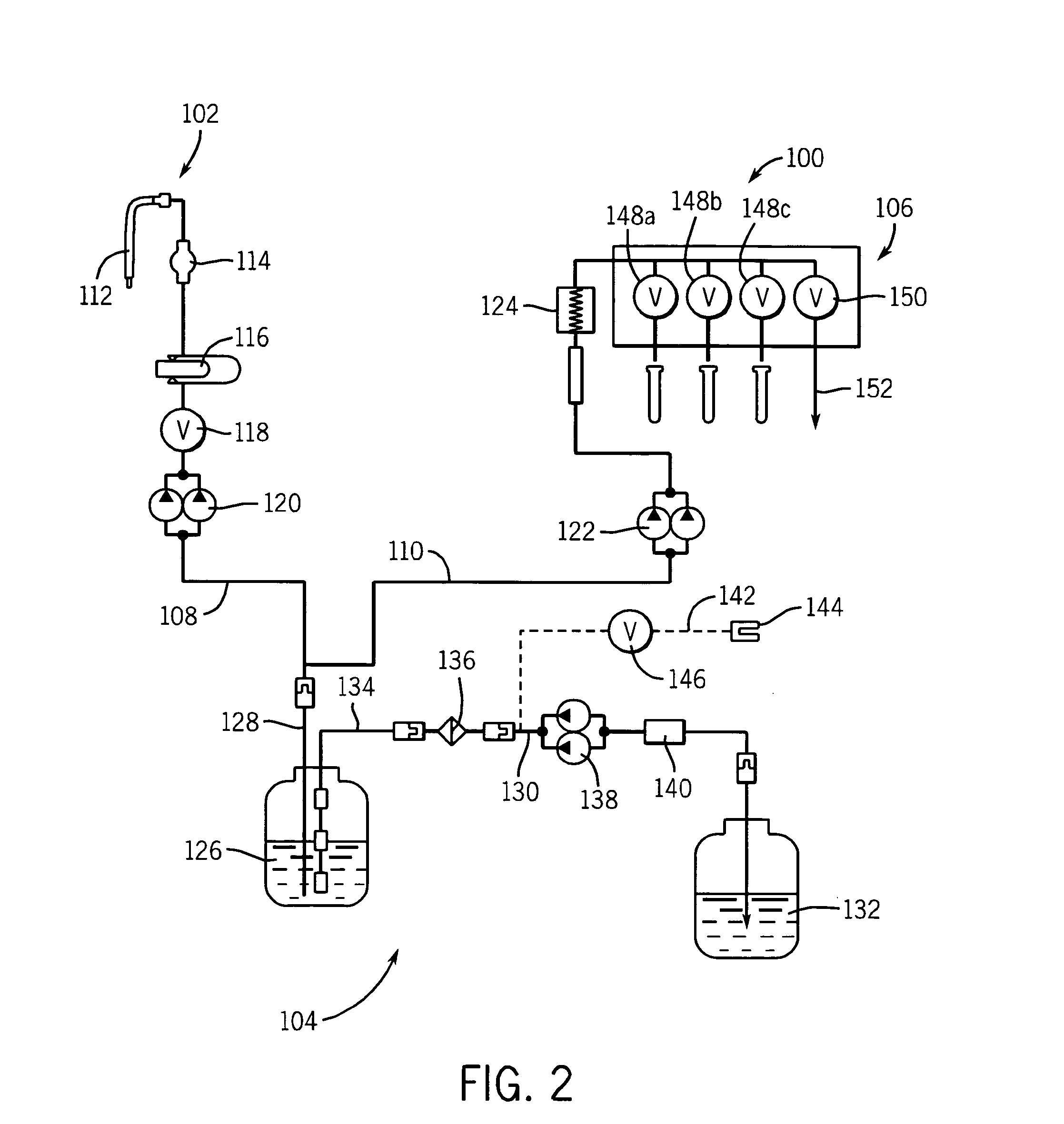Liquid waste management system
a waste liquid and liquid waste technology, applied in the field of automatic instrument removal of waste liquid, can solve the problems of blockage of liquid flow, excessive space requirements, and excessive cost relative to the system, and achieve the effect of reducing the number of automatic instruments and eliminating the need for manual removal
- Summary
- Abstract
- Description
- Claims
- Application Information
AI Technical Summary
Benefits of technology
Problems solved by technology
Method used
Image
Examples
Embodiment Construction
[0030]As used herein, the expression “automated diagnostic instrument” means a diagnostic instrument wherein involvement of an operator in the assay processing steps is minimal. As used herein, the expression, “on-board container” means a container that fits within the confines of the automated diagnostic instrument and is capable of moving with the instrument when the instrument is moved. As used herein, the expressions “liquid waste” and “waste liquid” are used interchangeably. As used herein, the expression “active wash cup” means a wash cup that uses a separate pump to provide a flow of buffer to the wash cup for washing the exterior surface of a pipette probe for reagents; the expression “passive wash cup” means a wash cup that does not use a separate pump to provide a flow of buffer to the wash cup for washing the exterior surface of a pipette probe. When a passive wash cup is used to clean a probe, the probe is plunged into the well of the wash cup, and the buffer used to cle...
PUM
| Property | Measurement | Unit |
|---|---|---|
| height | aaaaa | aaaaa |
| pressure | aaaaa | aaaaa |
| pressure | aaaaa | aaaaa |
Abstract
Description
Claims
Application Information
 Login to View More
Login to View More - R&D
- Intellectual Property
- Life Sciences
- Materials
- Tech Scout
- Unparalleled Data Quality
- Higher Quality Content
- 60% Fewer Hallucinations
Browse by: Latest US Patents, China's latest patents, Technical Efficacy Thesaurus, Application Domain, Technology Topic, Popular Technical Reports.
© 2025 PatSnap. All rights reserved.Legal|Privacy policy|Modern Slavery Act Transparency Statement|Sitemap|About US| Contact US: help@patsnap.com



